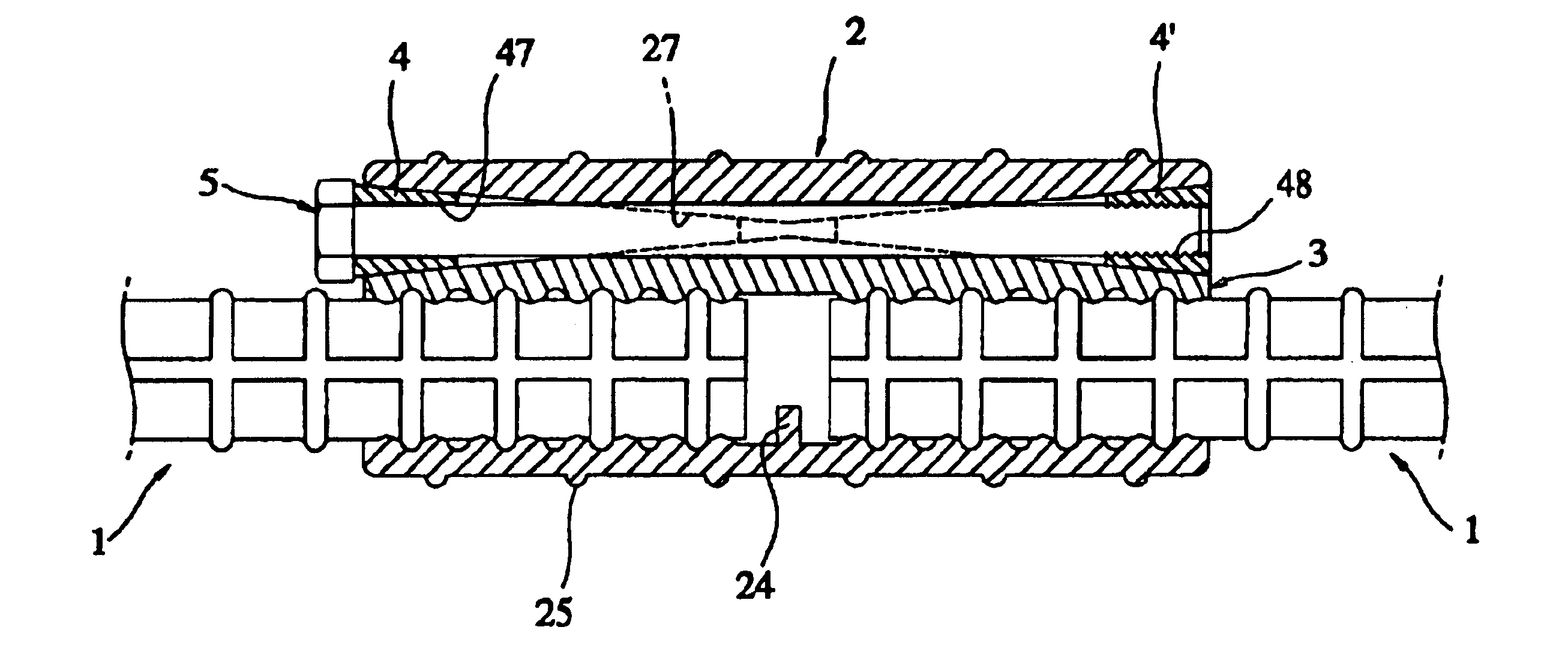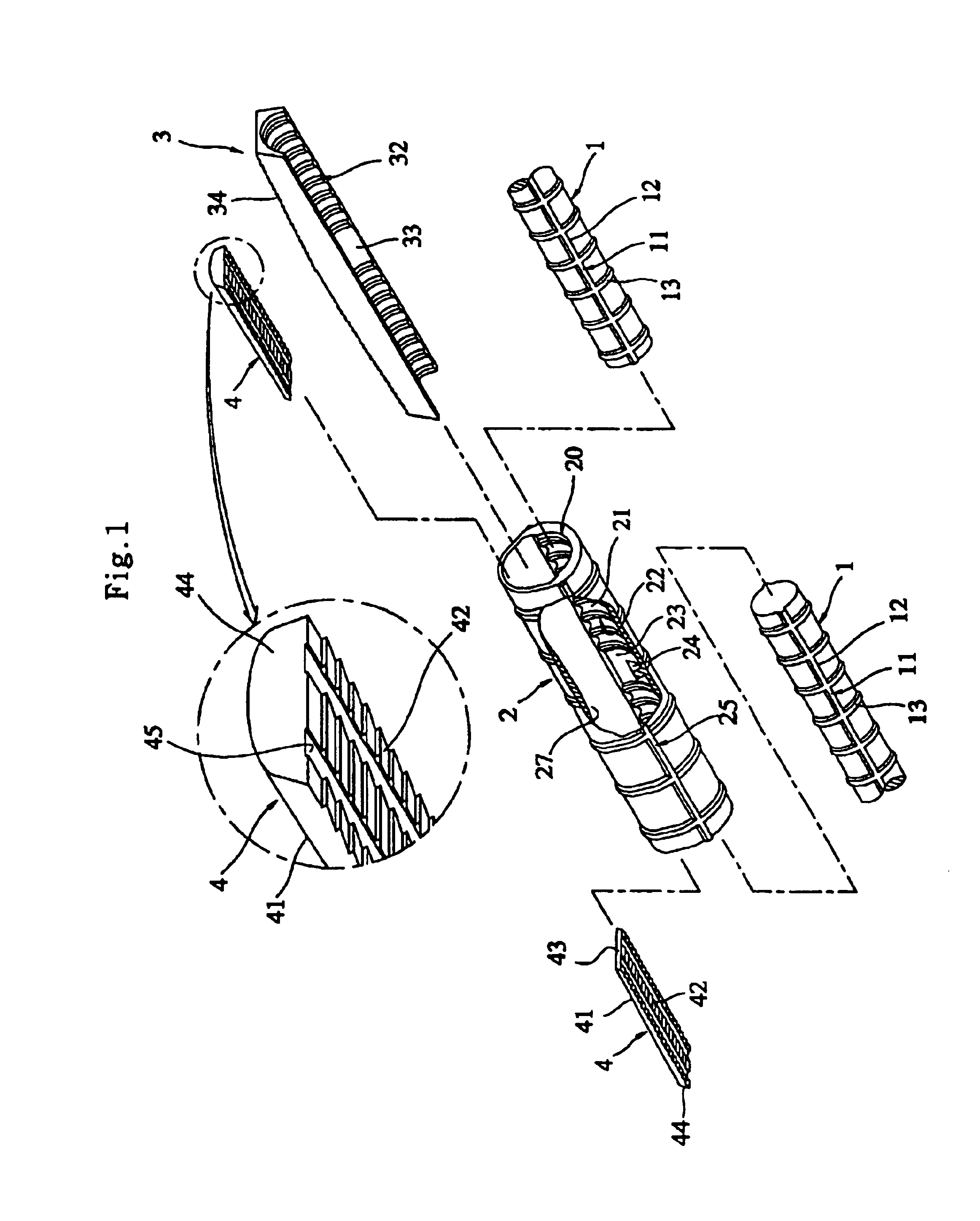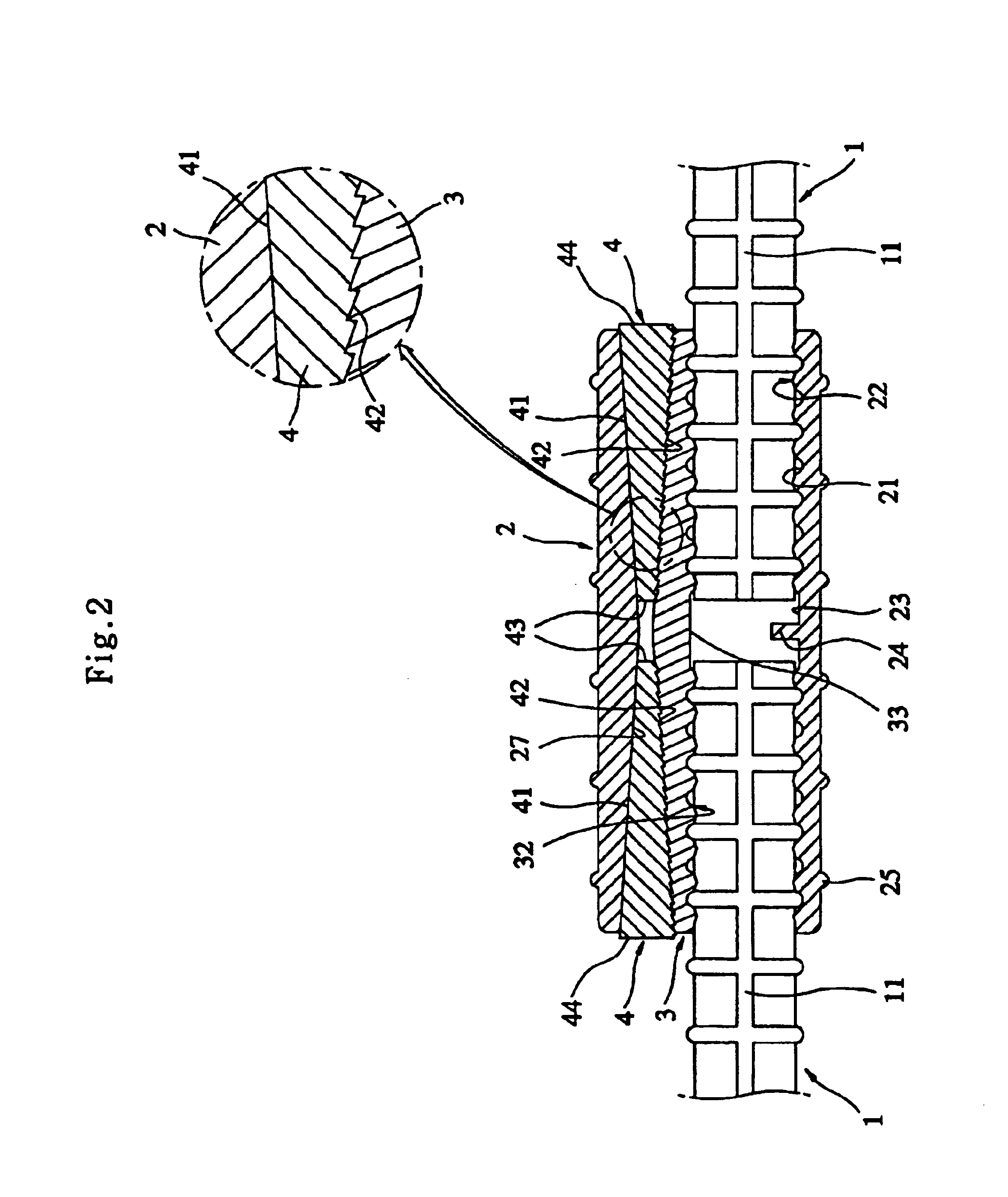Reinforcing bar coupling
a technology of reinforcing bars and couplings, applied in the field of couplings, can solve the problems of increasing the number of reinforcing bars, difficulty in pouring concrete into space, and difficulty in reinforcing bars, and achieves the effects of convenient and firm coupling, avoiding excessive consumption of reinforcing bars, and advantageous cost saving
- Summary
- Abstract
- Description
- Claims
- Application Information
AI Technical Summary
Benefits of technology
Problems solved by technology
Method used
Image
Examples
first embodiment
FIGS. 1 to 3 are an exploded perspective view, a cross-sectional view and a transverse cross-sectional view of the present invention, in which the embodiment of the present invention comprises a cylindrical sleeve 2, a intermediate pad 3 and a pair of wedges 4 to join two reinforcing bars 1. A perspective view of a reinforcing bar coupling according to the embodiment of the present invention is shown in FIG. 10, in which the reinforcing bar coupling is assembled.
The reinforcing bars 1, the intermediate pad 3 and wedges 4 are separately inserted or pushed into openings 20 of the cylindrical sleeve 2 of a certain length. The size of the cylindrical sleeve is designed according to the diameter of the reinforcing bars to be joined. To this end, the cross section of the cylindrical sleeve 2 assumes a shape similar to an ellipse.
As is well known in the art, a reinforcing bar is evenly formed at its outer surface with ribs to improve strength and adhesion to the concrete. The cylindrical s...
second embodiment
The method of coupling reinforcing bars according to the present invention can be advantageously applied to an operation of coupling new reinforcing bars to existing reinforcing bars 1 which have been previously arranged, or to existing reinforcing bars 1 which are embedded in poured concrete where adhesive force between the existing reinforcing bars and the concrete may be weakened by impact shocks acting on the wedges.
The stopper 24, the ribs 25 and the inner slant face 27 of this embodiment have the same shapes and functions as those of the first embodiment.
FIGS. 7 to 9 show a third embodiment of the present invention. The essential configuration of this third embodiment is substantially equal to that of the first and second embodiments, except that the driving direction of the wedges 4 is perpendicular or transverse to the reinforcing bars. To this end, a cylindrical sleeve 2 is formed with two wedge fitting openings 29, which are oriented to be perpendicular or transverse to th...
fourth embodiment
Referring to FIGS. 11 to 13, there is shown the present invention. This embodiment is designed to be applied in the case where shapes and positions of semi-annular ribs formed on the outer surfaces of the reinforcing bars provided by various manufacturers are different from one another. That is, where grooves of an uneven surface of an intermediate pad do not coincide with semi-annular ribs of a reinforcing bar in position, the area of the contact surface between the intermediate pad and the reinforcing bar is reduced. To accommodate such nonconformity between the grooves of the intermediate pad and the semi-annular ribs of the reinforcing bars, this embodiment is intended to allow the intermediate pad to be slightly displaced to conform to the reinforcing bar.
To this end, the intermediate pad 3 comprises three intermediate sub pads, as shown in FIG. 11. In other words, the intermediate pad 3 comprises a first intermediate pad 51 and a pair of second intermediate pads 52. The second...
PUM
 Login to View More
Login to View More Abstract
Description
Claims
Application Information
 Login to View More
Login to View More - R&D
- Intellectual Property
- Life Sciences
- Materials
- Tech Scout
- Unparalleled Data Quality
- Higher Quality Content
- 60% Fewer Hallucinations
Browse by: Latest US Patents, China's latest patents, Technical Efficacy Thesaurus, Application Domain, Technology Topic, Popular Technical Reports.
© 2025 PatSnap. All rights reserved.Legal|Privacy policy|Modern Slavery Act Transparency Statement|Sitemap|About US| Contact US: help@patsnap.com



